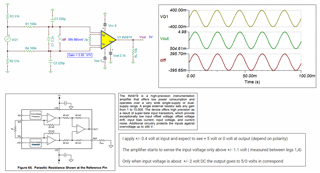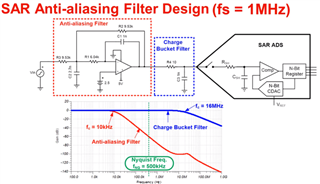Other Parts Discussed in Thread: OPA191, INA826
hi,
Need your help to understand and fix an unexpected results while using INA819 as amplifier with gain = 6.9
The op amp's power is single 5 volt dc and Gnd
It looks very simple, but does not work
c81, c78 , c79 are not assembled.
Output is going to TI's ADS7828E Analog to Digital converter
The purpose of the design is to measure 4 to 24 mA dc current
The ref pin voltage is 2.5 volt driven by OPA191
I apply +/- 0.4 volt at input and expect to see + 5 volt or 0 volt at output (depend on polarity)
The amplifier starts to sense the input voltage only above +/- 1.1 volt ( measured between legs 1,4)
Only when input voltage is about +/- 2 volt DC the output goes to 5/0 volts in correspond
I don't know how to solve it
please your advice
regards
Tsfania
Tsfania










